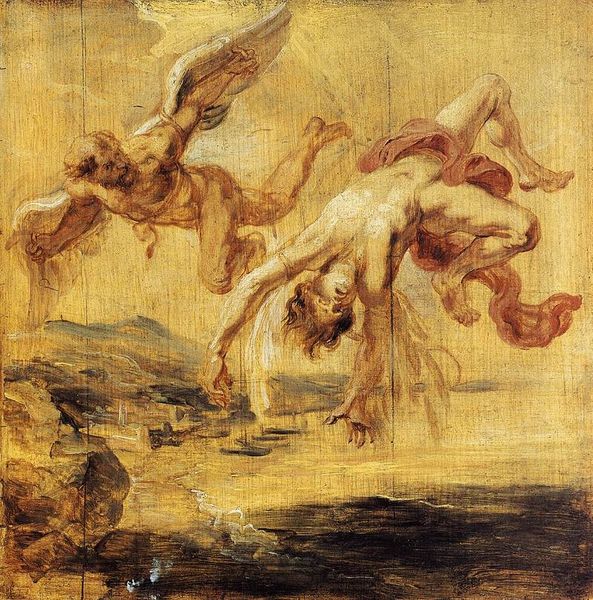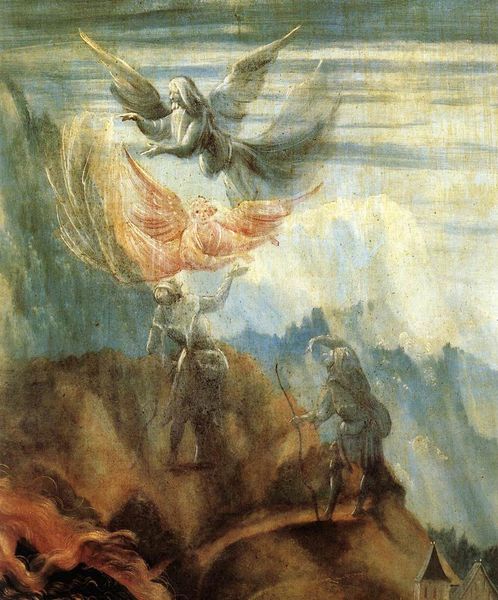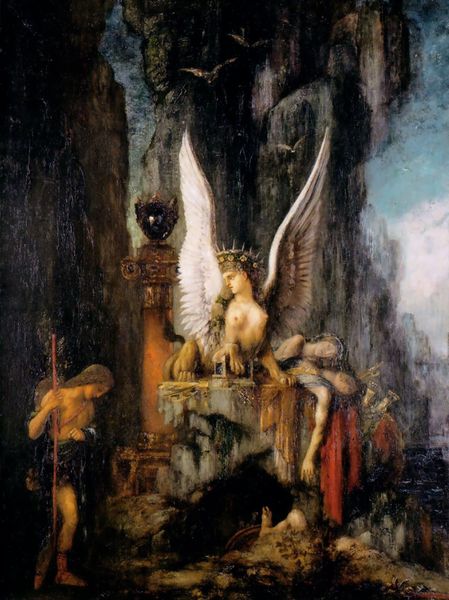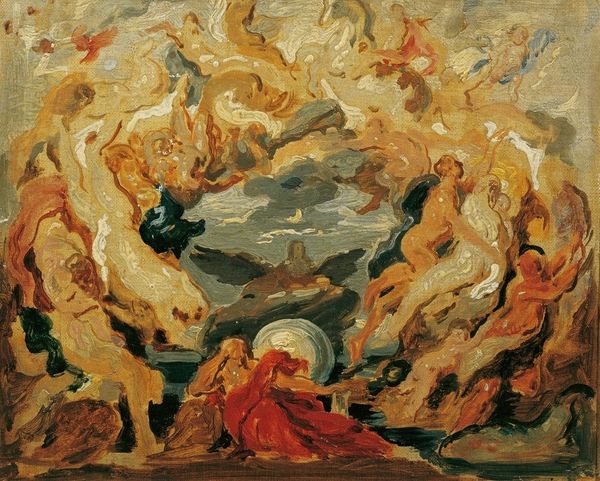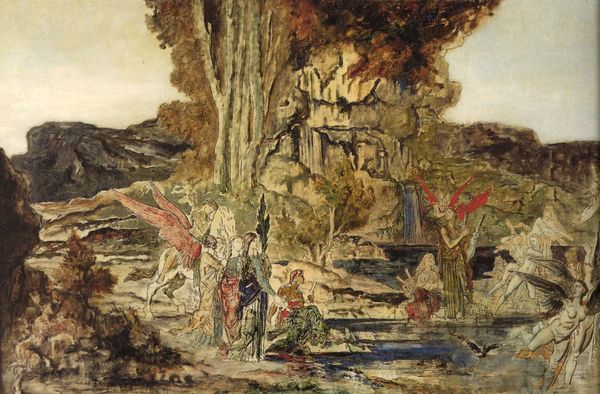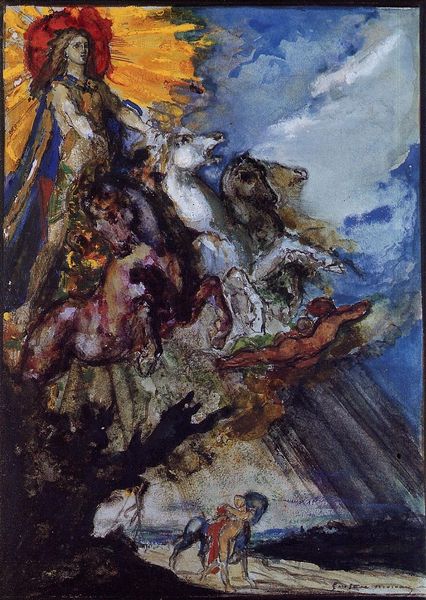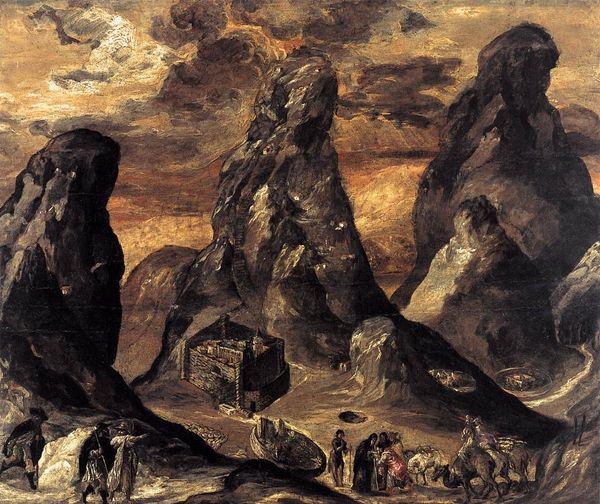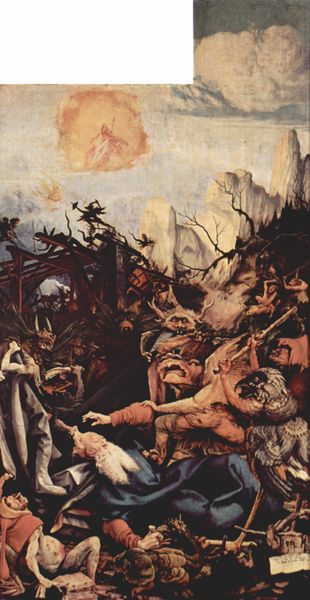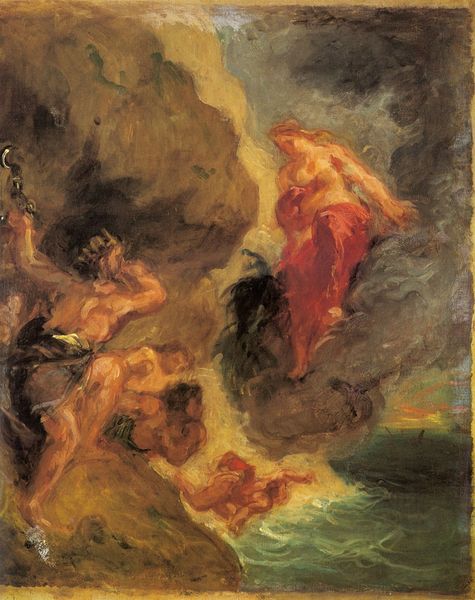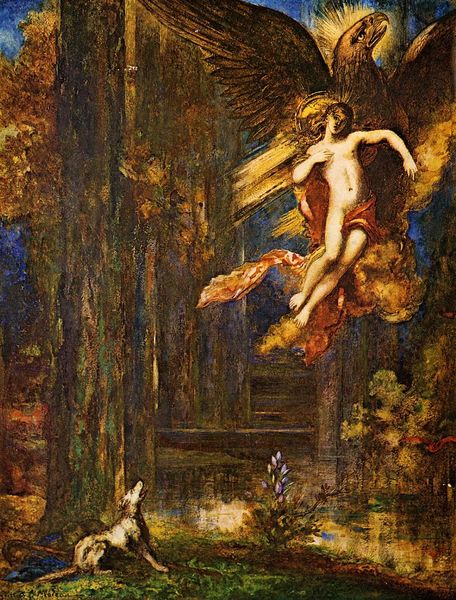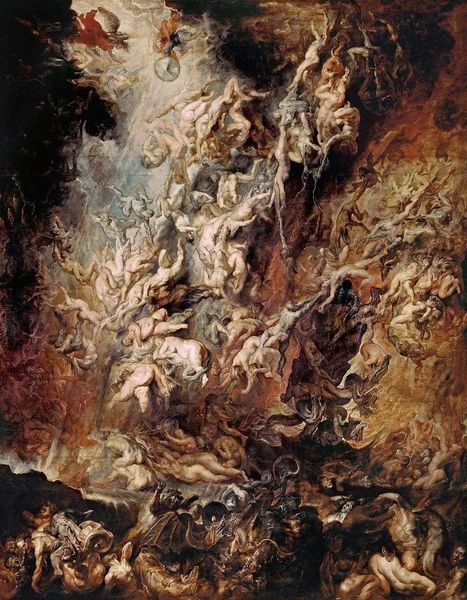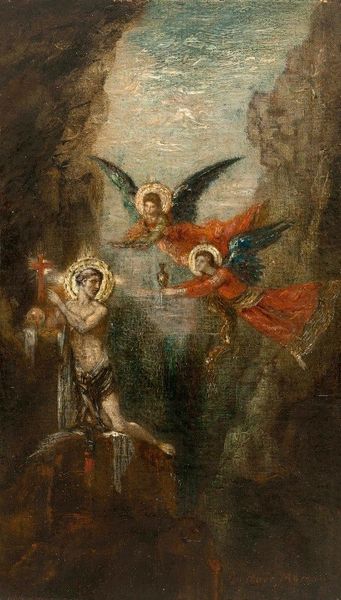
Copyright: Public domain
Curator: Gustave Moreau, in his painting, "Hercules at Lake Stymphalos", executed around 1880 and rendered in oil, captures a dramatic moment from Greek mythology. Editor: The scene certainly feels dramatic. The loose brushstrokes and muddy color palette give it a dark and almost frantic energy. It’s a chaotic scene—not what I usually associate with depictions of heroes. Curator: Moreau often employed mythological subjects to explore broader themes of good versus evil, the heroic ideal, and the artist’s inner struggles, and situates these concepts against the prevailing social structures of his time. The location, the Musée National Gustave Moreau in Paris, certainly frames how the piece is read. Editor: Indeed, you see how a classical tale becomes this psychological portrait, charged with the tensions of its own era. Hercules, typically portrayed as a paragon of strength, here looks vulnerable. He seems less a conqueror and more someone caught in a maelstrom. It makes me think of the weight of heroism and its personal cost. Curator: Consider also Moreau’s symbolism; it speaks directly to the political and artistic circles of 19th century France. The Stymphalian birds aren’t just monstrous fowl, they are manifestations of the monstrous elements of society that Hercules, or perhaps the artist himself, must overcome. Editor: Absolutely. Viewing those birds as manifestations of oppressive forces opens the door to deeper conversations. They become emblems of various injustices that Moreau, perhaps indirectly, critiques. What's interesting is how his use of romanticism, with its emphasis on emotion and individualism, pushes against the academic art that dominated the salons. Curator: Moreau himself operated within the academic system, so his stylistic choices also created interesting conversations and provided subtle challenges to conventional tastes of his time. Editor: Right. So what seems at first a simple mythological scene actually resonates with the complex social, political, and artistic landscape of its era. It invites us to think about who our contemporary 'Hercules' figures are, and what monstrous birds they might be fighting. Curator: An artwork that can open dialogue and reframe narratives of both past and present. I find it fitting that the work remains in the museum dedicated to Moreau, a space almost suspended outside time, where art can continue to question power. Editor: Yes, it is thought-provoking. Now I am interested in delving more into how art acts as an instrument to both shape and disrupt the status quo of a place and time.
Comments
No comments
Be the first to comment and join the conversation on the ultimate creative platform.
